
Testing the Ford Explorer: How the MEB electric car from Cologne performs
The name sounds like America; freedom and adventure, and the silhouette of Cologne Cathedral greets you from the depths of the centre console. When Ford now sells the new Explorer at extremely self-confident prices starting at 49,500 euros in Germany, no one should doubt its blue blood.
The genesis of the electric crossover is more complex: To save time during development, and since VW used the Transit platform for its new van, Ford did not develop the Explorer itself but instead used the MEB platform from Volkswagen, and then really fumbled at the start. Although Ford sacrificed the Fiesta for the newcomer last summer and rebuilt the main plant in Germany for two billion euros, this promising vehicle is only now coming onto the market and has to compete in the densely populated compact class segment. After all, the electric revolution at Ford has yet to really take off: The Mustang Mach-E is a distant memory, the F-150 Lightning is just an expensive eye-catcher in the niche market, and the electric Transit is only just getting started.
At least the Explorer is well-equipped for its mission as an ambulance. With a length of 4.47 metres, Ford has cleverly chosen a format that lies pretty much exactly between the ID.3 and ID.4 cousins from Wolfsburg. They have also given the Explorer its own shape and, thus, its own character. With a proud, upright front end, an unconventional window graphic and an angular rear end, it is actually more reminiscent of the American Explorer from the league of large off-road vehicles than of the soap-smooth VW models.





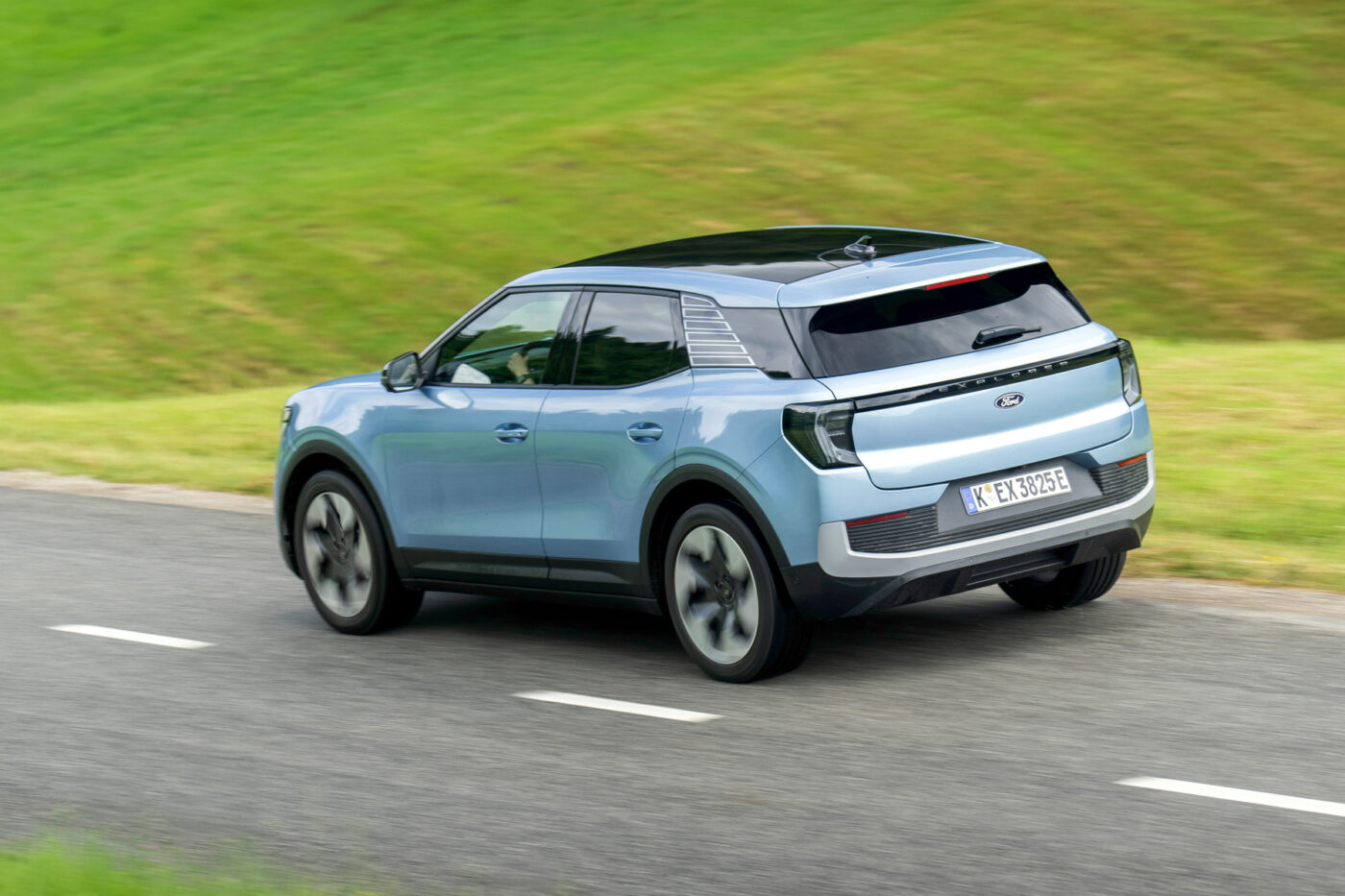

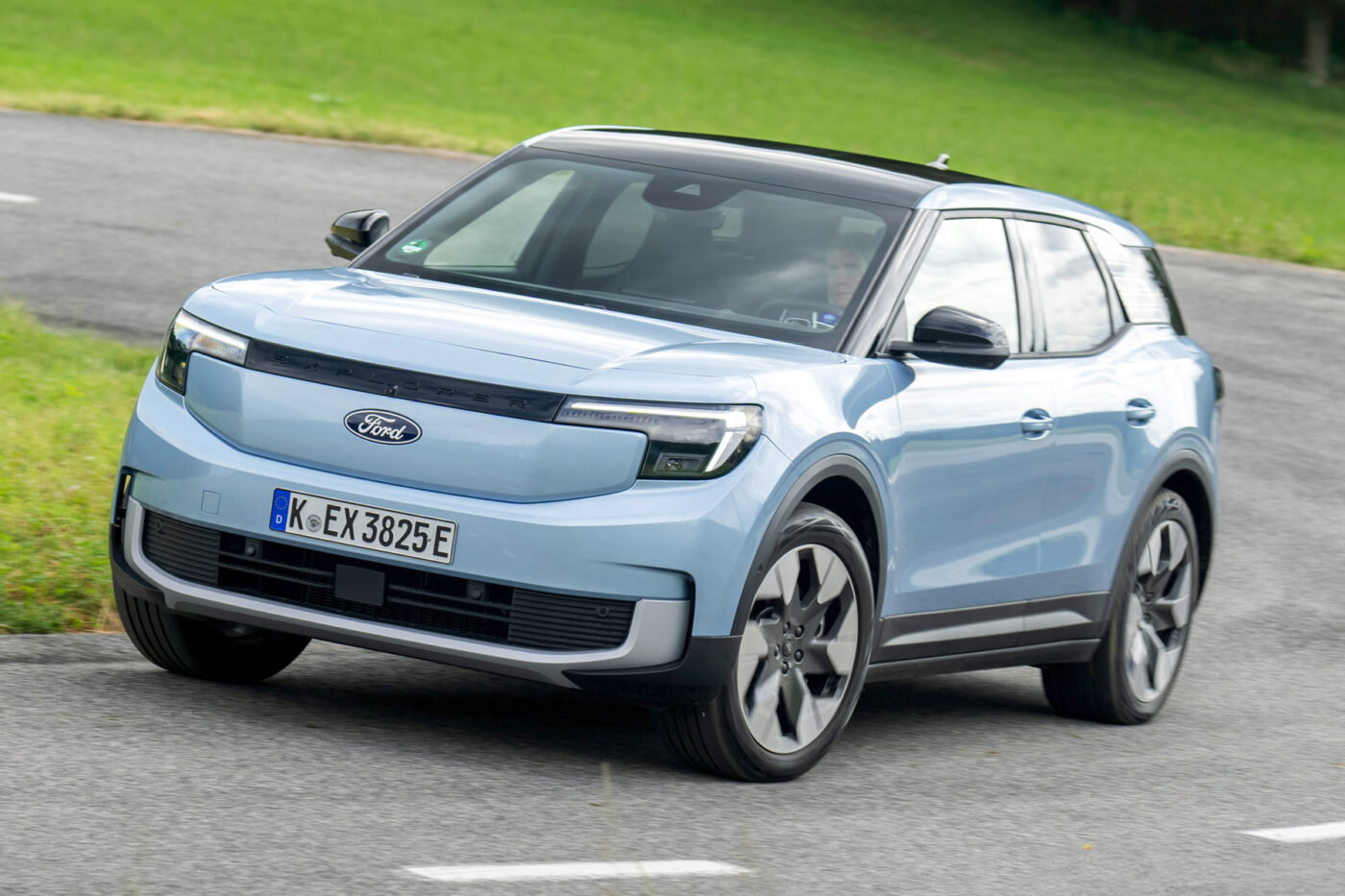






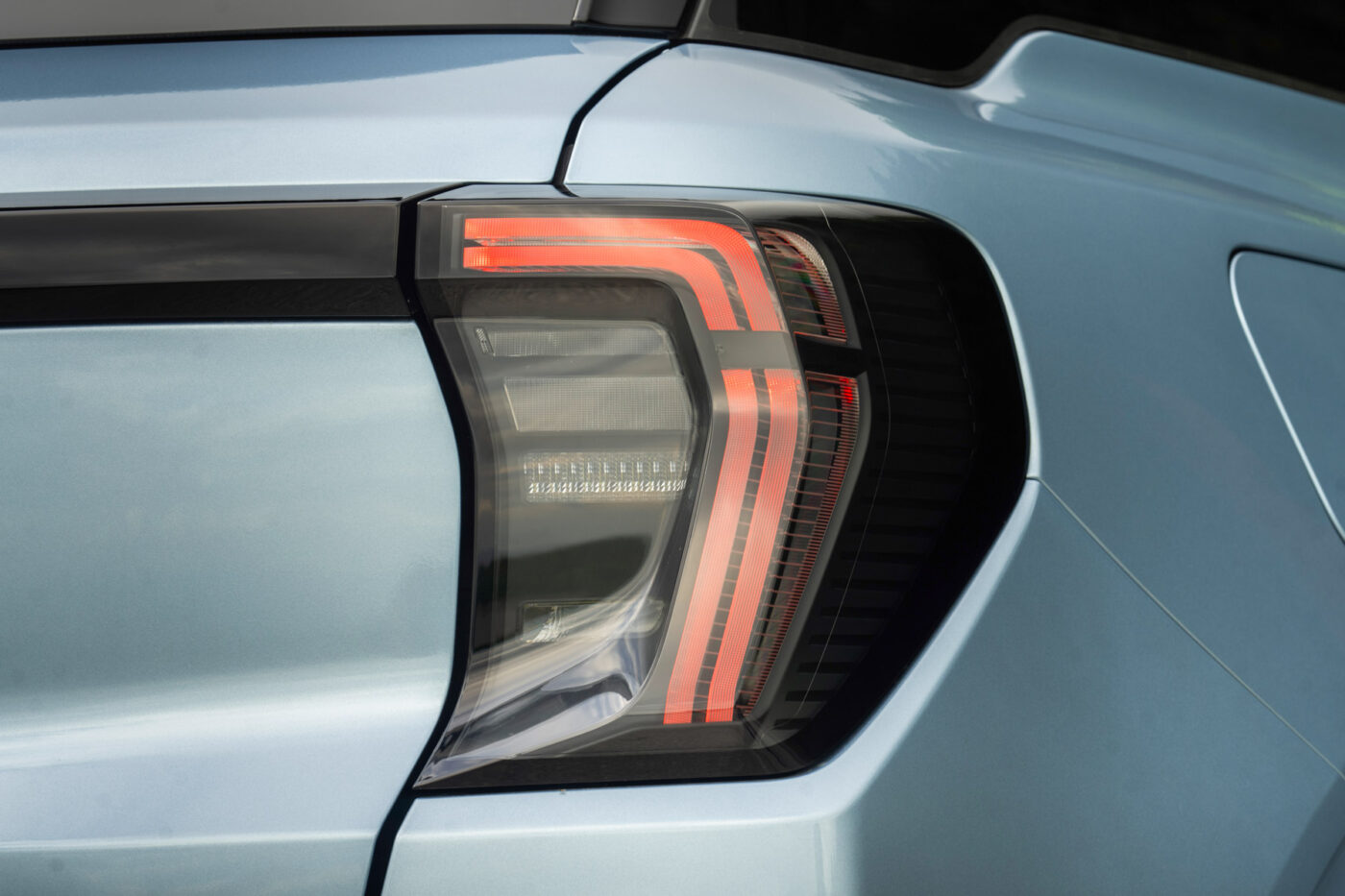





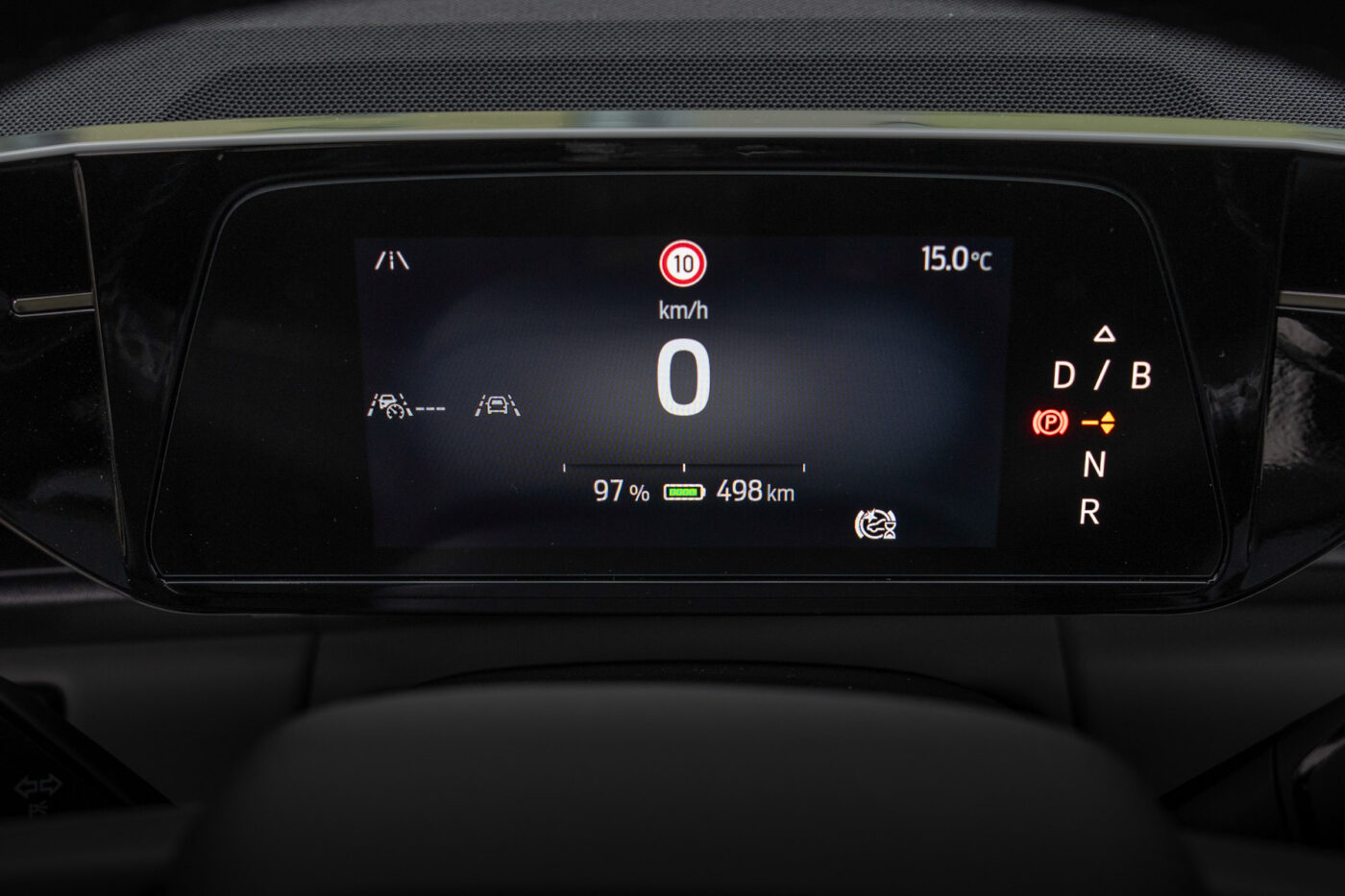
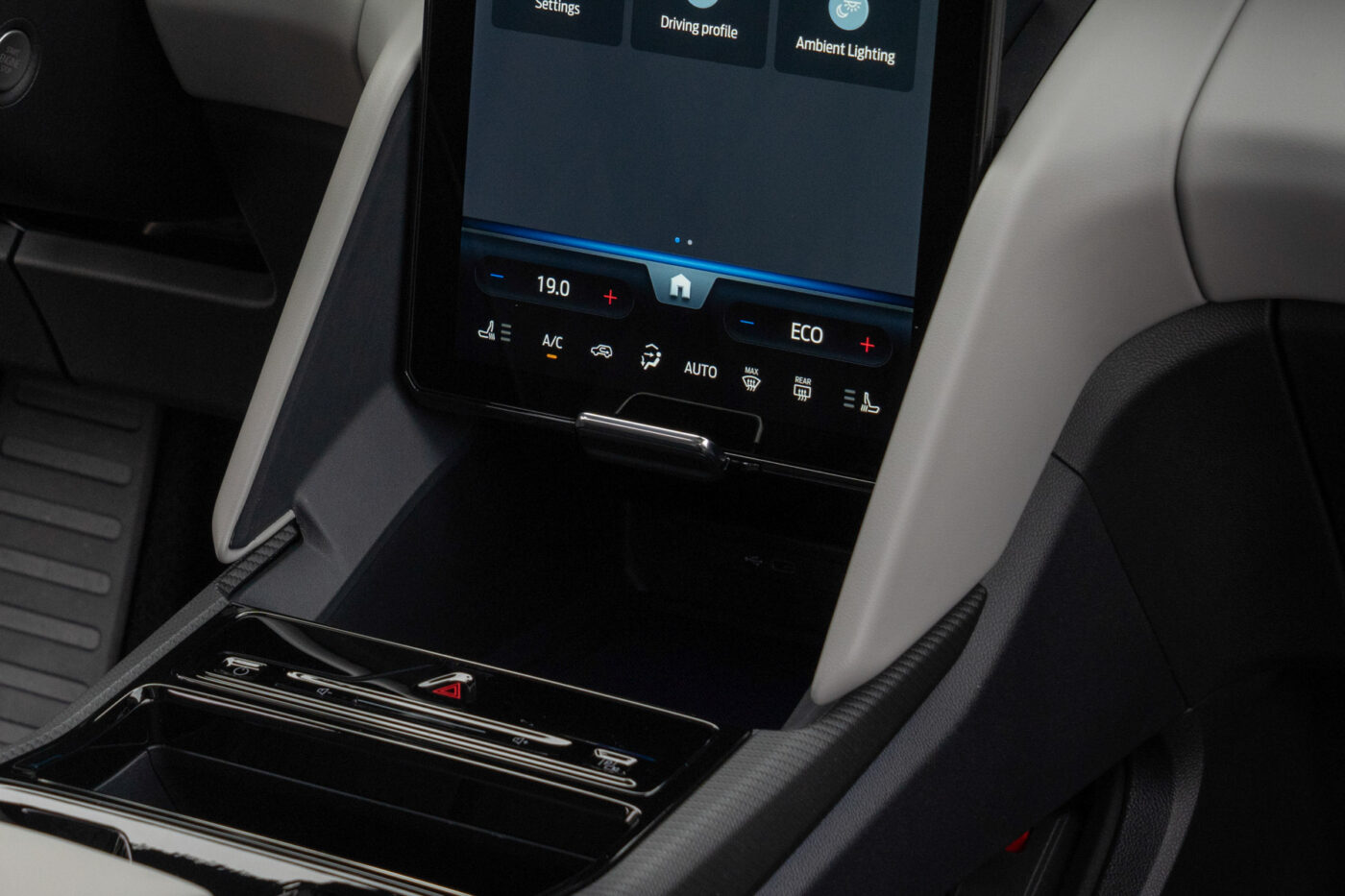


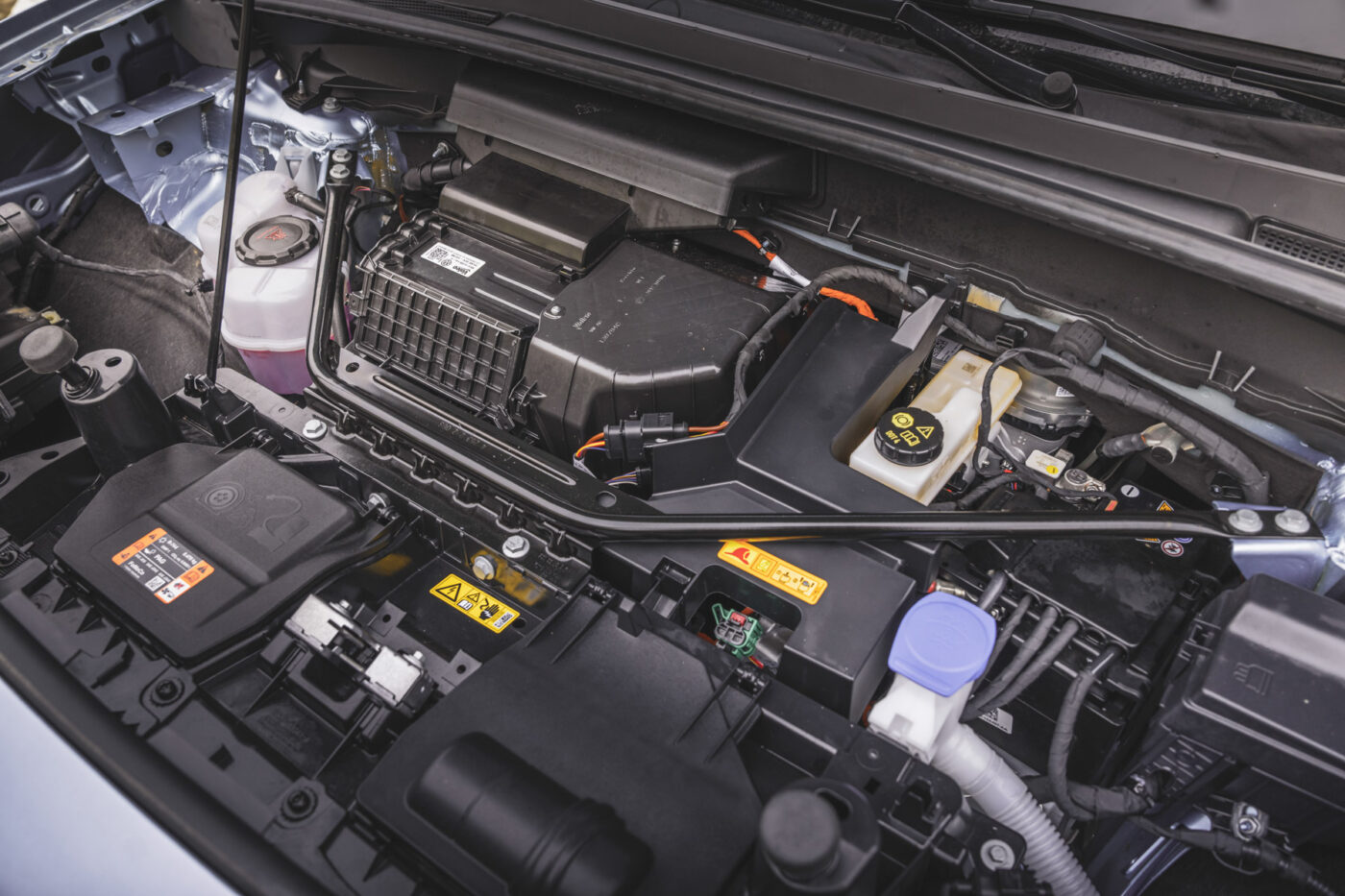
Inside the car, the sensor buttons on the steering wheel remain, which VW is slowly phasing out, and the rest of the cockpit also looks familiar. However, the centre console is unique. Whether it’s the secret compartment linked to the central locking system behind the vertically mounted 15-inch screen, the multifunctional console with its many nested inserts or the data packs for free download, which customers can use to build additional accessories on the 3D printer – you can hardly design the storage space in the car in a simpler or more clever way. It’s a shame there wasn’t enough creativity for at least a tiny frunk. Not that the boot is too small at 536 litres, and there is a basement for the charging cable. But when you have to unload everything in the rain on the way to your holiday before charging, you know how valuable that would be.
Above all, however, the Ford drives differently. Although the drive and batteries are the same, because that is where time and money can be saved, Ford did its own tuning in Cologne and gave the Explorer a little more dedication along the way. Just as the Fiesta always drove better than a Polo because it was more fun to drive, the Explorer also makes you feel more connected to the vehicle and the road and less apathetic as you drive towards your destination – even if the differences in the electric world are of course not quite as significant.
In the provisional base model, the Ford is propelled by a 210 kW electric motor mounted on the rear axle, which enables speeds of up to 180 kph and draws its power from a 77 kWh battery. That is sufficient for 602 standard kilometres at best and can then be charged with a maximum of 135 kW. If you spend €4,000 more, you get two motors with an identical top speed, 250 kW of power and a 79 kWh battery for 566 kilometres at best, which can still be charged with 185 kW. In both cases, just under 30 minutes is enough for a charge from 10 to 80 per cent. And if you’re on a budget, you’ll have to wait until the last quarter of the year when Ford adds the 125 kW version with a 54 kWh battery for 384 kilometres – for 42,500 euros. In the UK, the basic version will sell from £39,875.
| Explorer RWD | Explorer AWD | |
|---|---|---|
| Drive | RWD | AWD |
| Power | 210 kW | 250 kW |
| Torque | 545 Nm | 134+545 Nm |
| Acceleration | 6.4 s | 5.3 s |
| Top speed | 180 kph | 180 kph |
| WLTP range | 602 km | 566 km |
| Battery | 77 kWh | 79 kWh |
| Charging capacity DC | 135 kW | 185 kW |
| Charging time DC 10-80% | 28 min | 26 min |
| Price (in Germany) | 49,500 euros | 53,420 euros |
The comparison with VW is difficult because the Explorer sits between the ID.3 and ID.4. But no matter how you do the maths, the Ford’s entry-level price is significantly higher than both models from Germany. At least Ford has a clearly organised structure: In addition to the initial two and later three drive variants, there are only two equipment levels -Explorer and Premium (additionally with Matrix light and ambient lighting, electric tailgate and a bit more chichi), a package with assistance systems and seven individual options from the panoramic roof to the electrically folding towbar and heat pump. And to ensure that everyday life at the charging station doesn’t become an adventure, the Explorer has access to the Blue Oval Charge Network, which currently comprises around 600,000 charging stations in Europe.
It may help frequent drivers on their journey across the continent. But for Lexie Limitless, this was only a small consolation. Over the past few weeks, the influencer demonstrated just how far the Explorer can actually travel with a high-profile round-the-world trip. However, the journey through Patagonia or to the pyramids was nothing compared to the adventures that await the Explorer in the open field between the Skoda Enyaq, VW ID.4, Opel Frontera, Peugeot e-3008, Hyundai Kona Elektro and Kia Niro EV here in Germany. At least, unlike Lexie, it won’t be on its own. Ford will launch an electric Puma at the end of the year, followed by a second MEB model, a sleekly designed sports crossover.




1 Comment